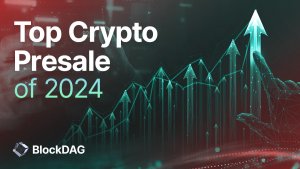Automating the middle office for better matching and settlement
Strategic investment in middle office operations can increase confirmation matching rates, faster exception resolution, and reduction in settlement failures.

Torstone Technology, a post-trade securities and derivatives specialist, has published a white paper highlighting the need for sell-side firms to invest in the middle office in order to improve operational controls, reduce risk and support regulatory compliance.
The study, conducted by Firebrand Research, emphasizes the pain points experienced by firms across middle office operations, which include:
– Pressure on staff to support multiple, fragmented processes tied to asset class siloes in the front office which can limit operational oversight;
– Higher settlement risk and related costs as a result of fragmentation and manual processes which are prone to inaccuracy;
– Challenges in meeting multiple market structure changes in a timely manner as manual processes face scalability issues;
– An inability to quickly respond to client requests due to lack of transparency across asset class-specific systems.
Torstone and Firebrand Research then proposed strategic investment in middle office operations in order to increased confirmation matching rates, faster exception resolution, and reduction in settlement failures.
An improved middle-office can also reduce the employee headcount needed to support manual processes, which provides more time to focus on value-added tasks such as support for new products and clients. The same can be said about the reduction in time taken to onboard new clients via a simplified interface for trade processing.
Better client service, regulatory compliance (particularly with regulations such as CSDR’s Settlement Discipline Regime) are a few other benefits.
Brian Collings, Chief Executive Officer at Torstone Technology, said: “The need to invest in automating the middle office has never been more important. Without doubt, firms are operating in an increasingly competitive environment, whilst having to ensure compliance with a multitude of regulations, and continuously needing to adapt to industry-driven market structure changes. By continuing to rely on manual processes, not only will firms be subject to greater operational risks and costs, but they also risk losing clients who are increasingly demanding greater levels of automation in service delivery and business resilience. The time for digital transformation of the middle office is now.”
Virginie O’Shea, CEO & Founder of Firebrand Research, commented: “A lack of efficiency in dealing with all of the required middle office processes that have stemmed from regulatory compliance obligations can result in trade confirmation backlogs and poor client service. As the wider market begins to focus on digital transformation and improving client experience, the middle office also needs to move with the times.”
Where will we be in five years’ time?
The securities services industry is still plagued with legacy technology systems that are 15-20 years old at a time when the rest of the world is moving forwards at an alarming pace with new technologies.
A survey conducted by Integral found that the $6 trillion foreign exchange (FX) industry is moving toward cloud computing at a fast rate. Nearly the entire industry is expected to integrate it, entirely or partially, over the next five years.
Findings showed that 28% of respondents will operate their FX technology completely in the cloud within the next five years compared to the current figure of 2%. An additional 41% will be using some combination of cloud and on-premise technology compared to 24% at present.
Respondents signaled the expected shift to the cloud is driven by lower cost of technology, ease of integration, automation, ability to customize, and accessibility for distributed workforces.
The survey found that 46% of participants expect multi-dealer platforms (MDPs) to see the biggest rise in FX trading in the next 12 months, followed closely by APIs at 33%, which are fed by an increased emphasis on relationship trading.
Mobile trading came third with 17%, and single-dealer platforms (SDPs), which once led the ranking, are now last with 2%.
The trading industry has invested in single-dealer platforms (SDPs) as they replaced legacy portals. These fully integrated “one-stop-shop” platforms evolved from execution-only trading applications to those featuring sophisticated pre- and post-trade capabilities.
SDPs, however, have encountered difficulties adapting to their clients’ changing demands. Multi-dealer platforms address these challenge as they reduce risks by providing apps that can be developed internally using proprietary technology or externally by peers or other third parties using shared technology. Plug-and-play apps improve the industry’s agility in meeting clients’ changing demands.









